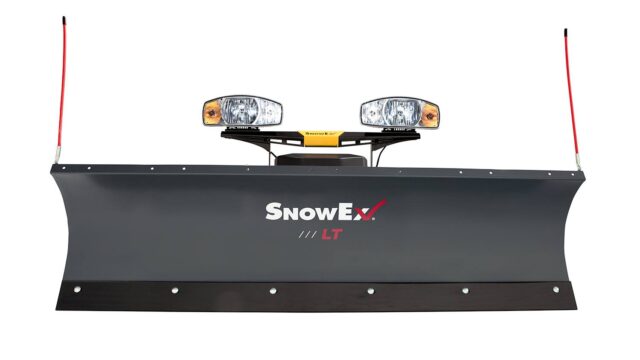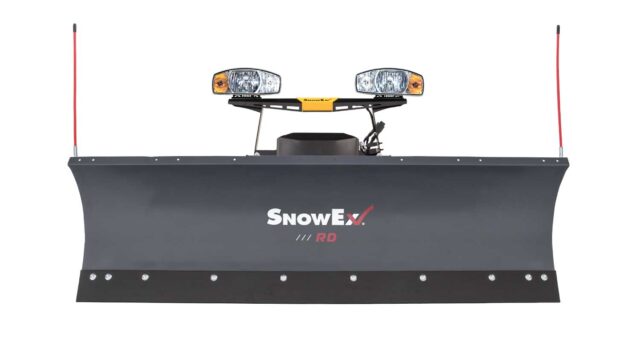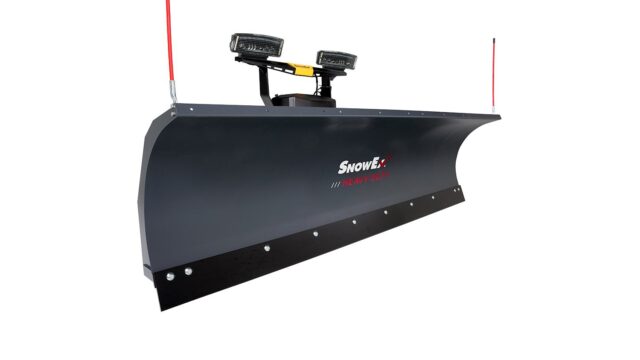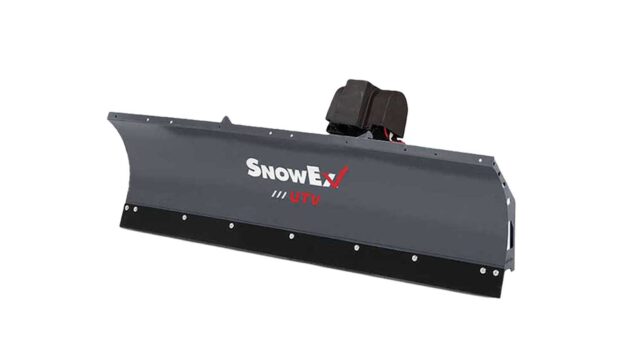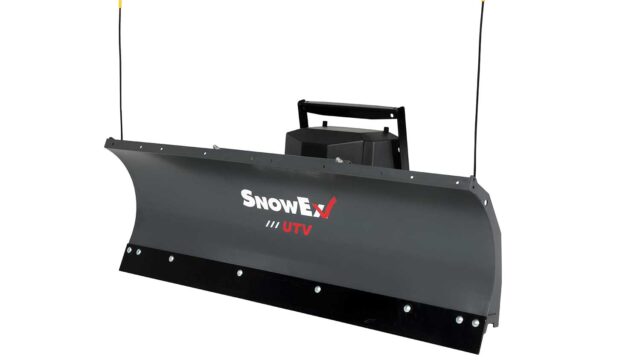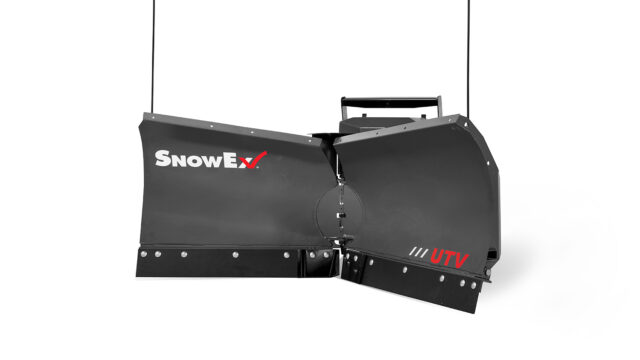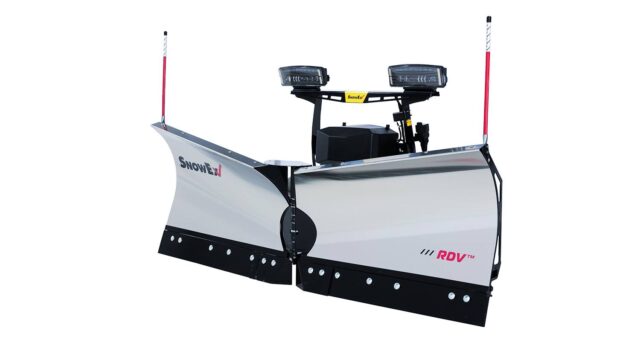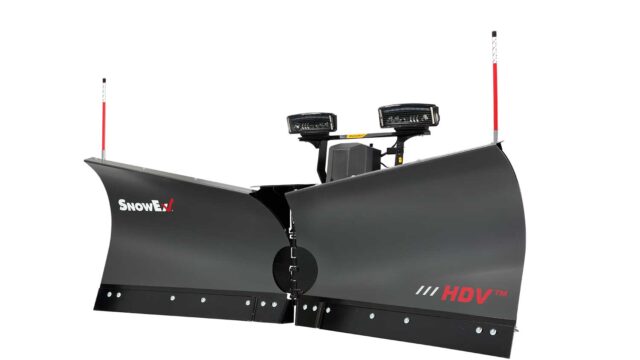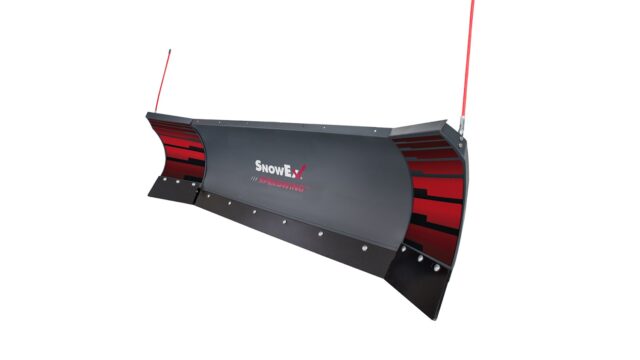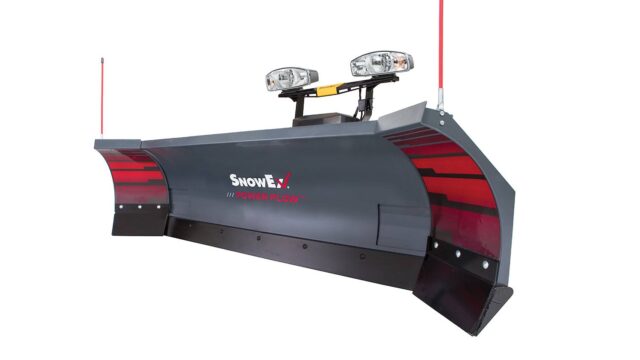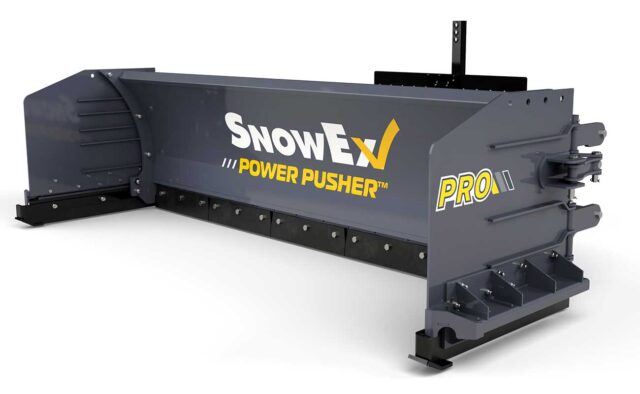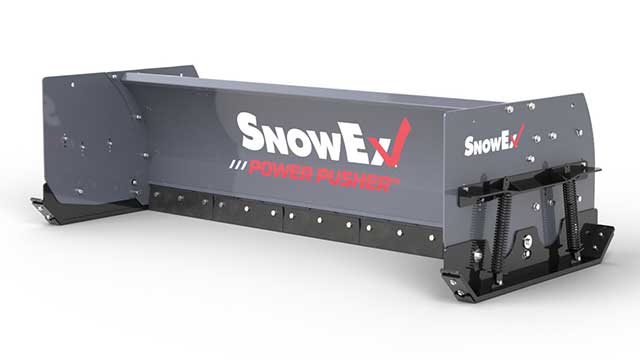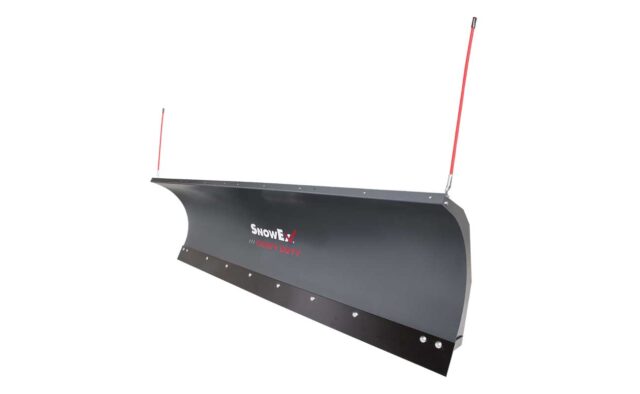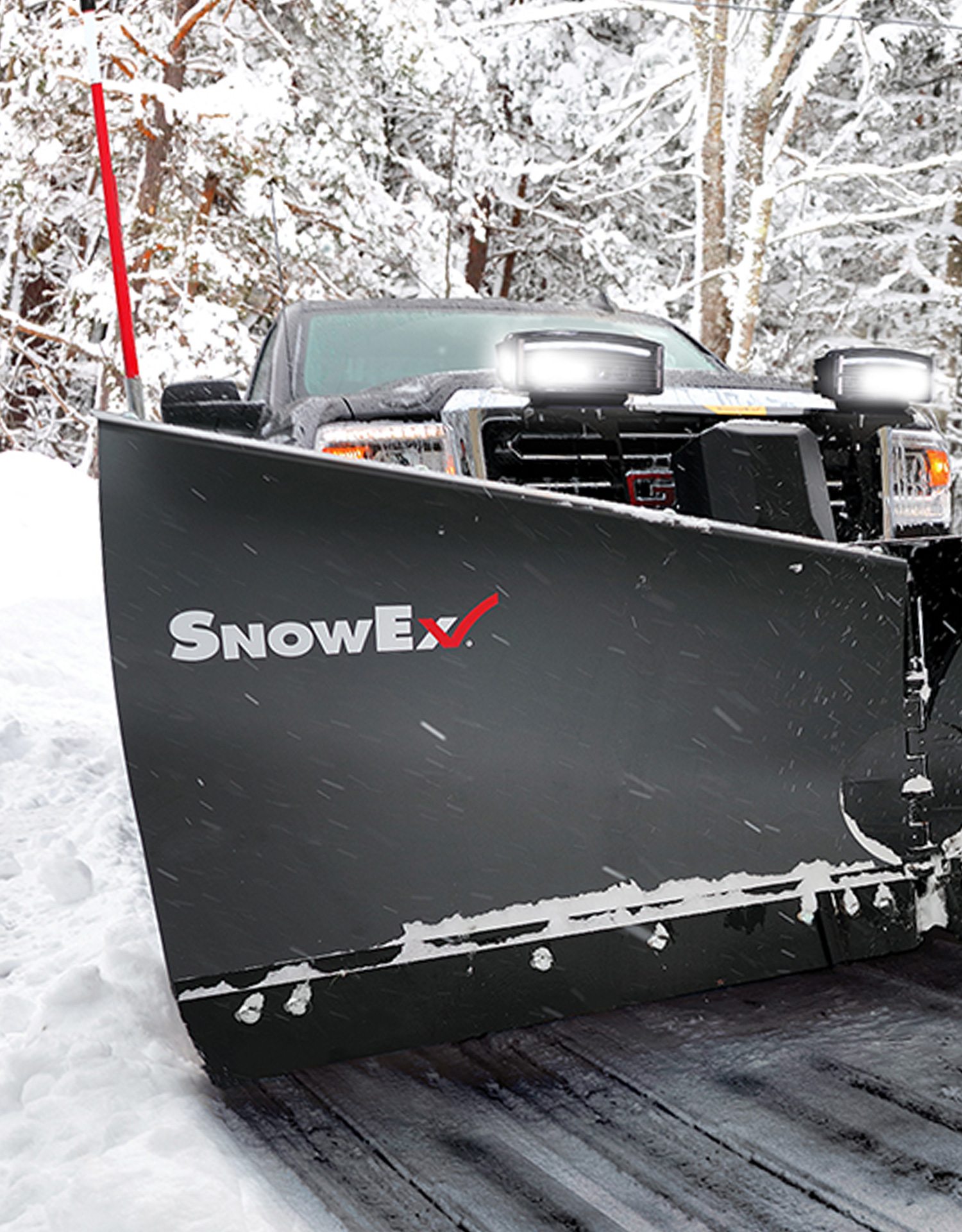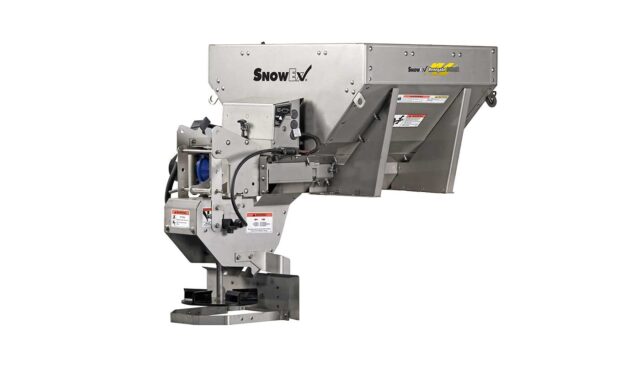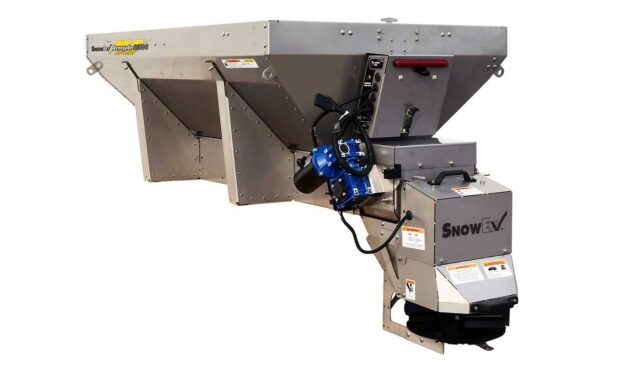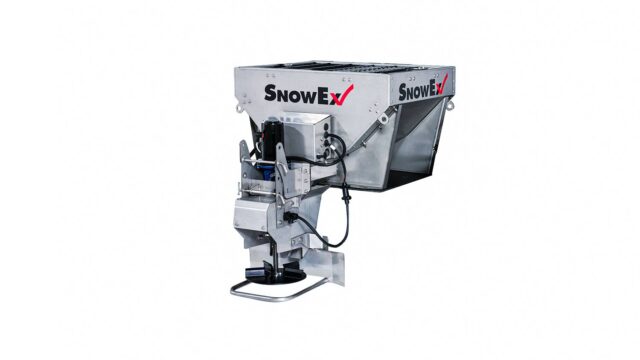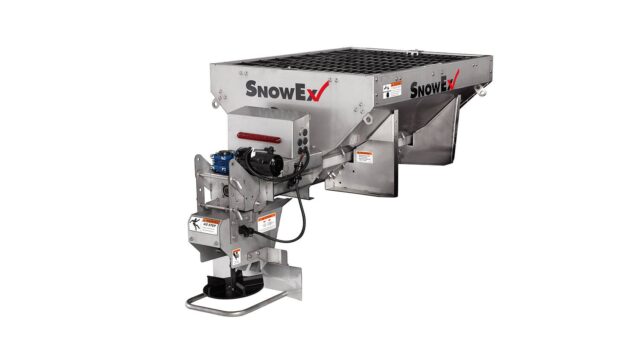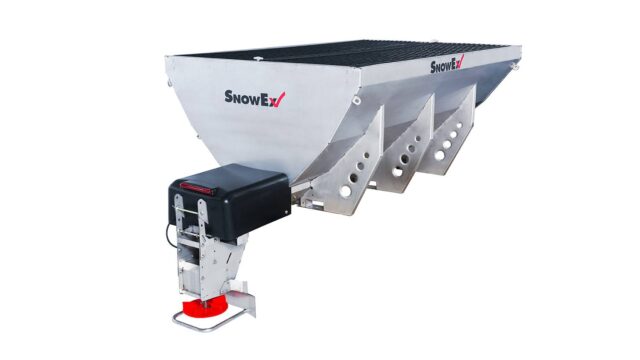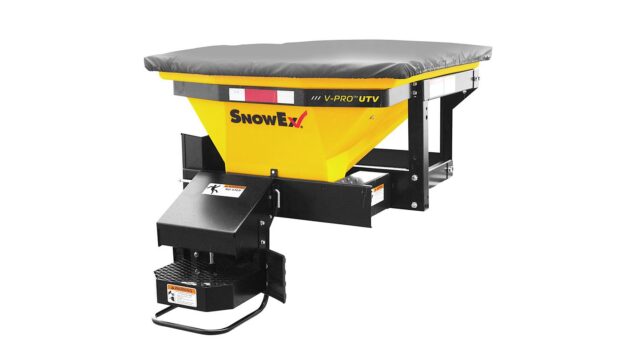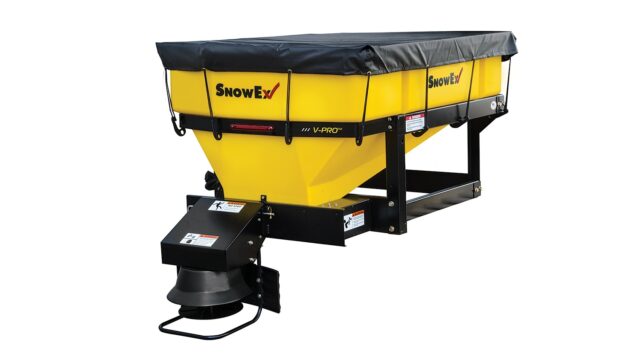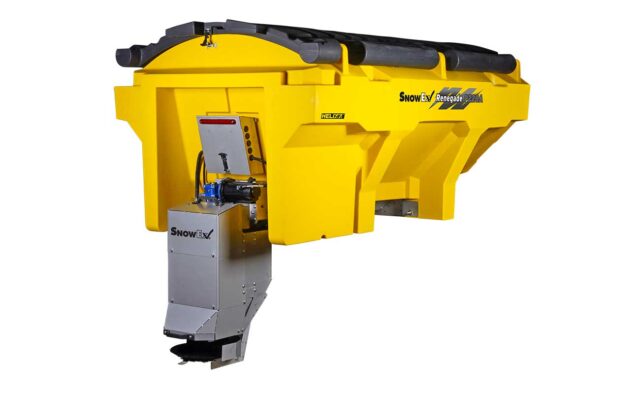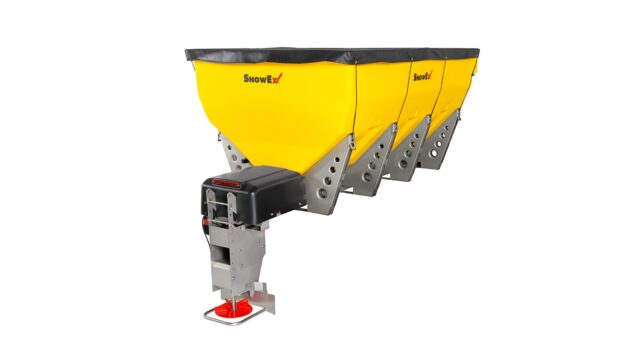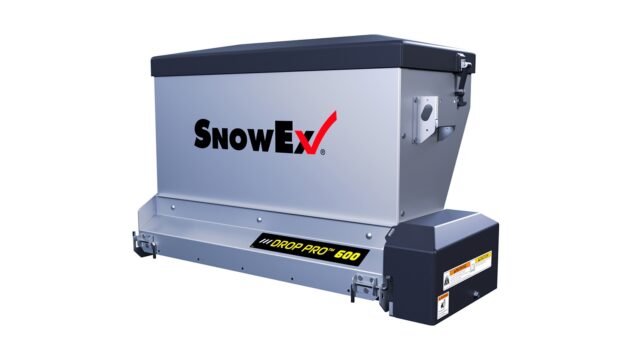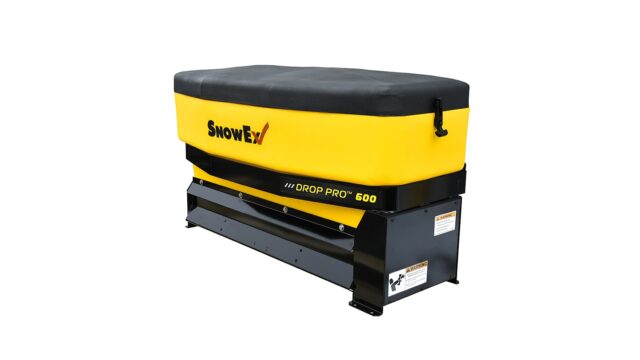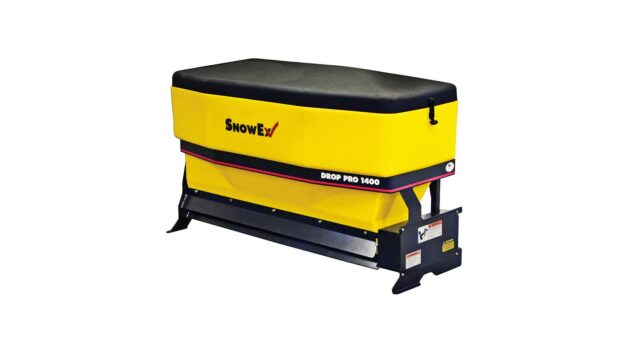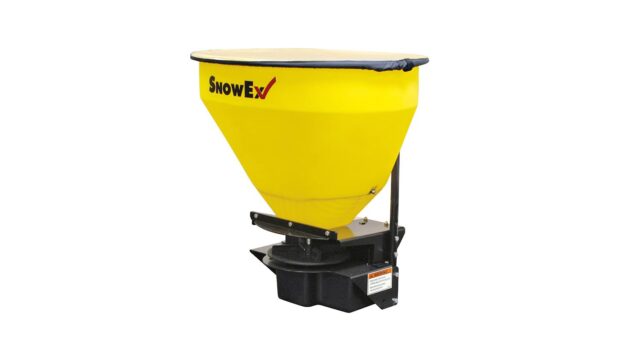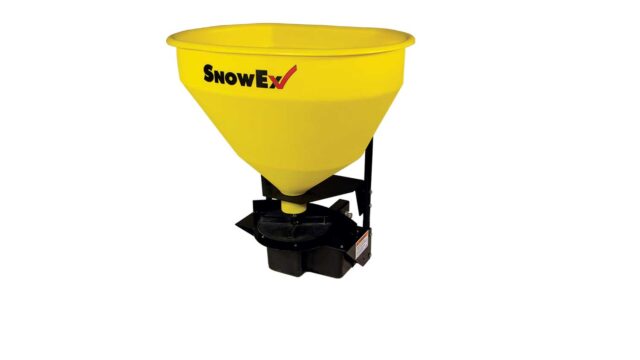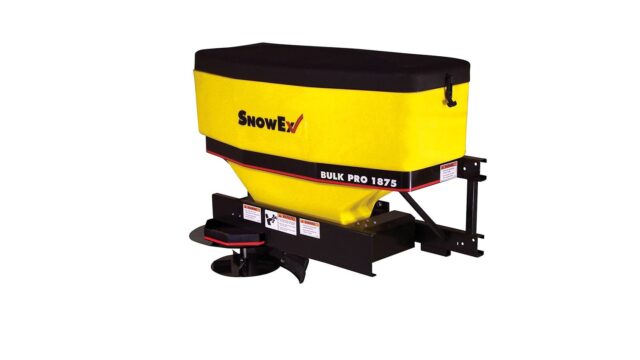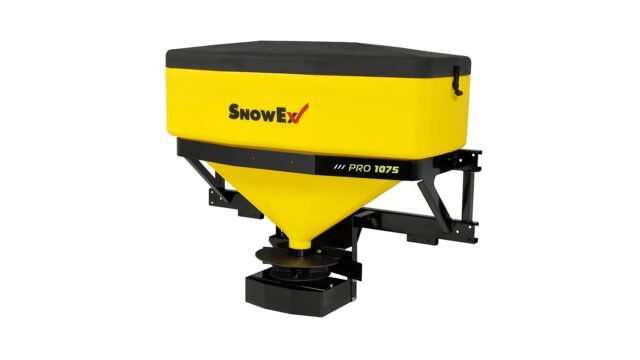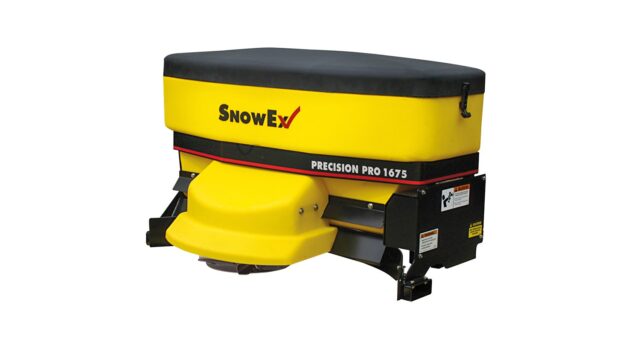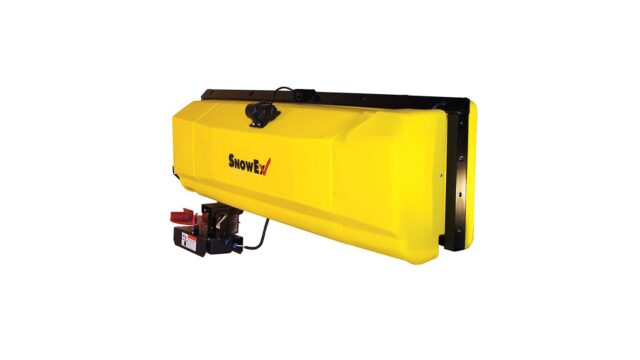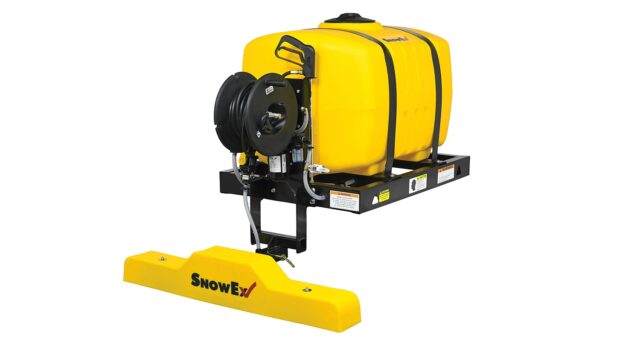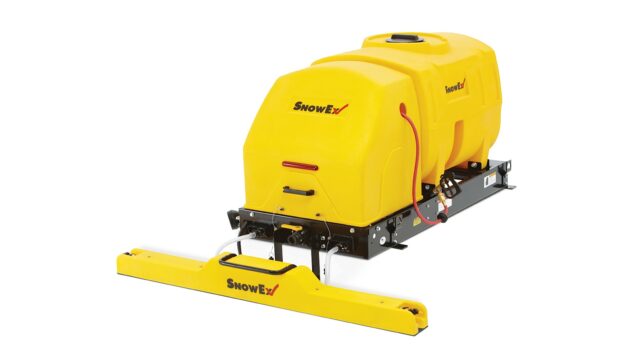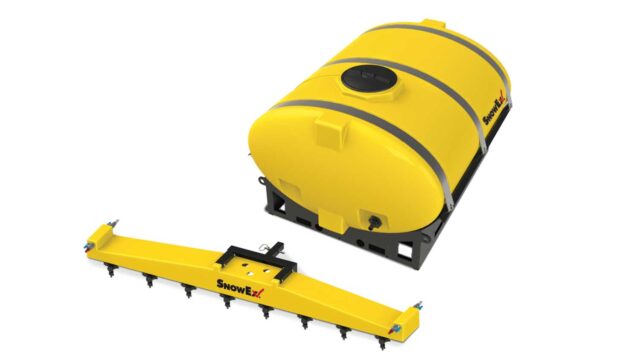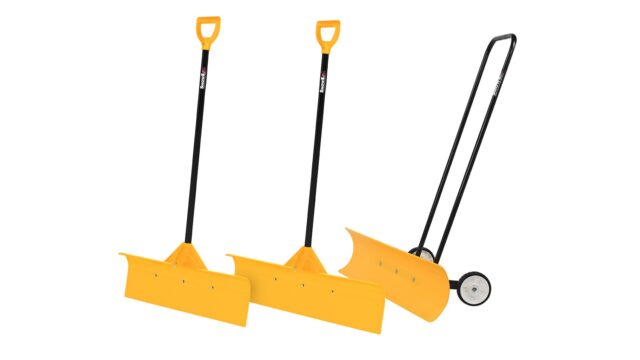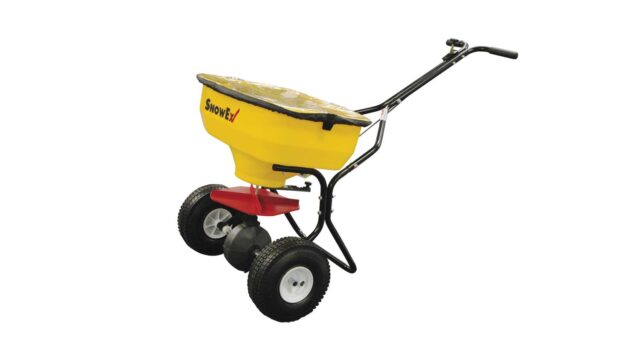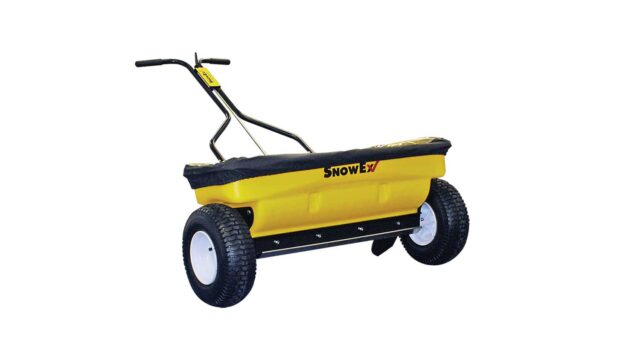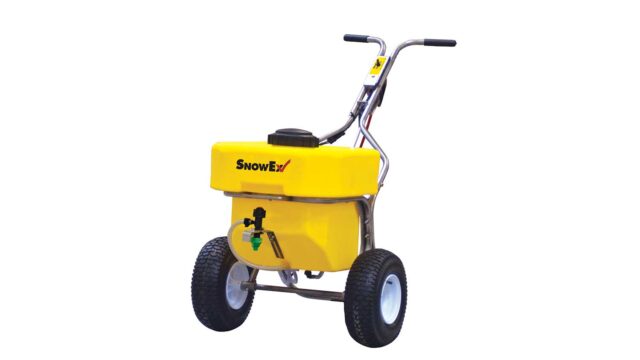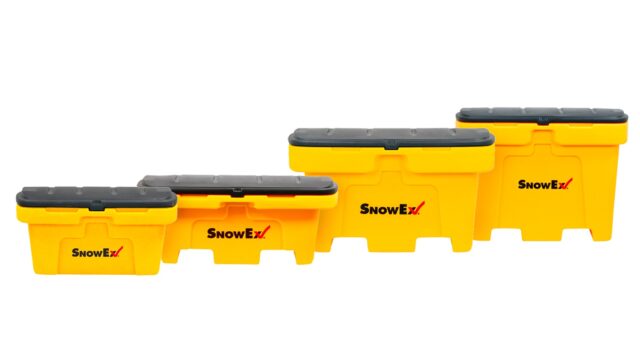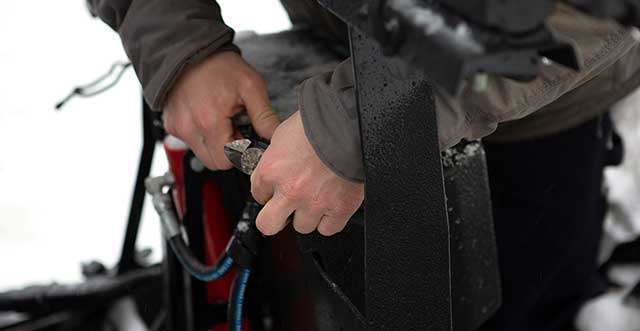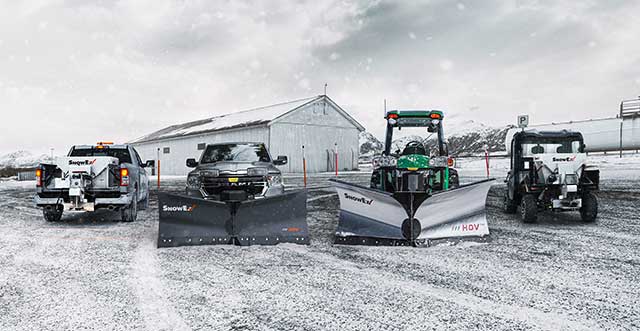The Trend of Pre-Wetting Salt for Deicing
Created March 15, 2020
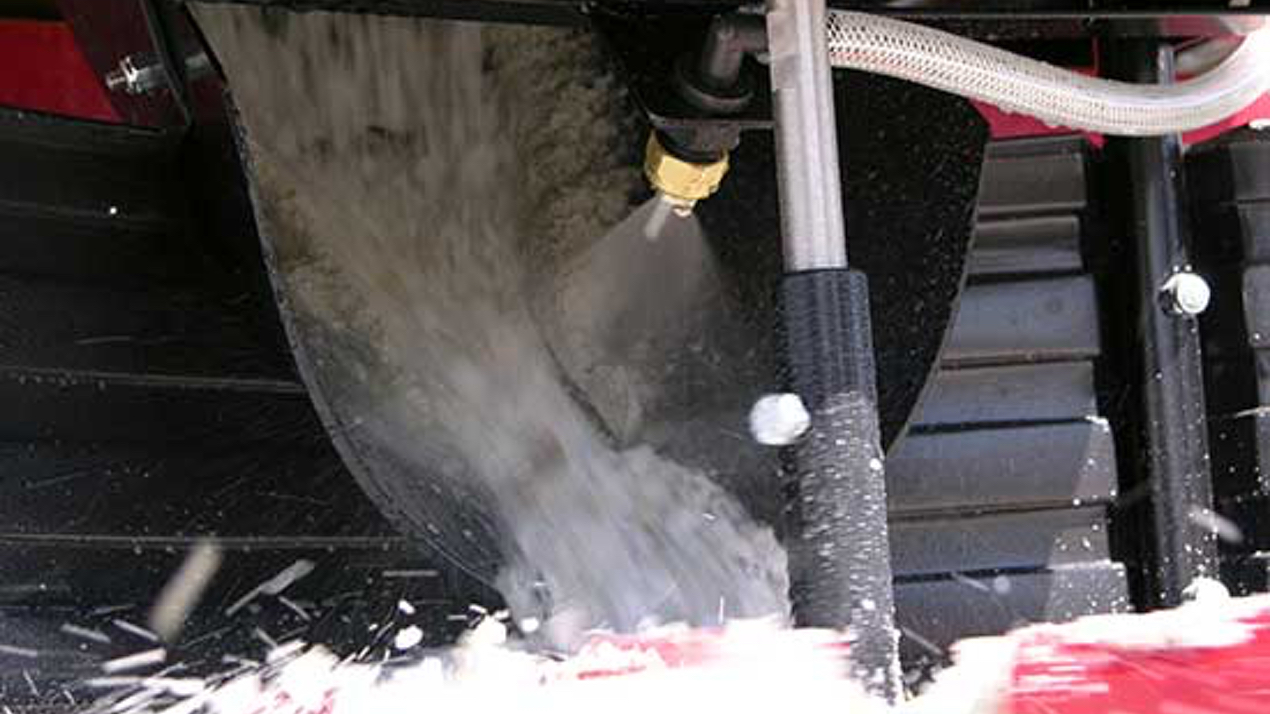
In the old days, contractors kept winter maintenance simple. Take a pickup, add a snowplow, throw in a spreader with deicing material and you were in business. Wait for a snow event, push snow around and put down rock salt to melt any ice. And if one layer of salt isn’t enough — no problem — just put down more. It wasn’t exactly scientific, but it was accepted practice.
Today the industry requires that most professionals take a more sophisticated and calculated approach to snow and ice control. A big reason is that customers are increasingly demanding that their parking lots, driveways and roads be completely cleared of ice to minimize the chances of slip-and-fall and other accidents. Another reason is the growing call for more “green” practices.
Granted, a snow and ice management business still begins with a plow and spreader, but the materials being spread – and how they are spread – have become much more advanced. Contractors are becoming much more sophisticated as well. They are not only learning how to work with these new materials and equipment, but are better understanding the science behind the process of melting snow and ice. And this trend toward more sophistication continues with the growing use of liquid deicing agents for pre-wetting spreading materials and anti-icing surface treatments.
Pre-Wet & Anti-Icing Efficiencies
The concept of pre-wetting and anti-icing in the battle against snow and ice is not new. Many municipalities have started utilizing this method over the past ten years, but it has yet to be commonly implemented by private contractors. Pre-wetting basically is what it sounds like — liquid chemical or salt brine solution being applied to a deicing material before it is spread. Anti-icing is similar, only the brine solution is sprayed directly onto the driving or walking surface. Though basic in practice, the benefits are considerable.
Pre-Wet To Make It Stick
A common problem with spreading bulk materials is that it can bounce off the roadway or be swept away by traffic or wind before having any effect. Some counter this by spreading far more material than necessary in hopes that what remains will do the job. Even when effective, this means wasted material and expense, along with adverse environmental effects.
This issue led to the idea of pre-wetting the spreading material. If the salt is wet, it’s more likely to cling to the target surface rather than bouncing or blowing away. At first, operators saturated materials with water after they were loaded into the spreader’s hopper. But considering the danger of the load freezing, most now use a part-brine, part-water solution. Conversely, instead of wetting material as it’s loaded, some use equipment that sprays brine onto material as it hits the spreader’s spinner. This allows for a more uniform application of brine.
Pre-wetting deicing materials also allows snow and ice to dissolve more quickly. The melting potential of deicing materials is usually determined by the agent’s ability to attract sufficient moisture from the environment, which then forms a liquid brine. Simply a mixture of water and the active deicing material, brine lowers the freezing point of water and then begins to melt the surrounding snow/ice. Using granular deicers alone is fine under the right conditions. But if temperatures drop below freezing, typically there is no moisture on the target surface and salt alone is ineffective. Pre-wetting the salt ensures enough moisture is present to facilitate the melting process.
Anti-Ice To Break The Bond
The same principles of pre-wetting material can be applied to addressing surfaces before a winter weather event strikes. This is known as anti-icing, which attempts to keep the bond between ice and pavement from ever forming. Brine solution is applied directly to the sidewalk, parking lot, driveway or road at the start of a storm, or even before it hits. By preventing the bonding of snow and ice with the surface, anti-icing makes plowing easier. Customers are happy since service is completed faster, and a contractor’s equipment suffers much less wear and tear.
Anti-icing is also advantageous because brine absorbs into the pavement and stays in place, unlike granular materials that don’t naturally adhere. This means that anti-icing can be done up to five days prior to a snow event. Provided it doesn’t rain, the chemical remains effective. Contractors can potentially grow business with this added ability to schedule applications before an actual weather event occurs.
Snow & Ice Control Equipment Advances
Methods of using brine solutions have certainly evolved. Equipment manufacturers have also developed better application options. Contractors can now buy equipment with the ability to either pre-wet material or anti-ice the application surface — or even do both simultaneously — all in one package.
For especially challenging applications, manufacturers are developing multiple spray nozzle options. One example is a high-volume, or “pencil”-spray, nozzle intended for areas where snowpack has already occurred. The goal of the high-volume spray is to break through the snowpack and apply brine solution to the underlying surface. As the snow and ice melt, the brine spreads out and eventually breaks the ice/road bond between the two pencil lines.
Though benefits associated with pre-wetting and anti-icing are obvious simply given its municipal acceptance, the practice is currently far from commonplace with the private contractor. But, as is the case with any new technology, necessity and further education will eventually lead to greater acceptance. With more people demanding better results, more environmental pressure regarding material overspill, and more manufacturers developing and promoting contractor-focused equipment options, pre-wetting and anti-icing will certainly gain traction on parking lots, driveways and other privately maintained areas in the near future.
